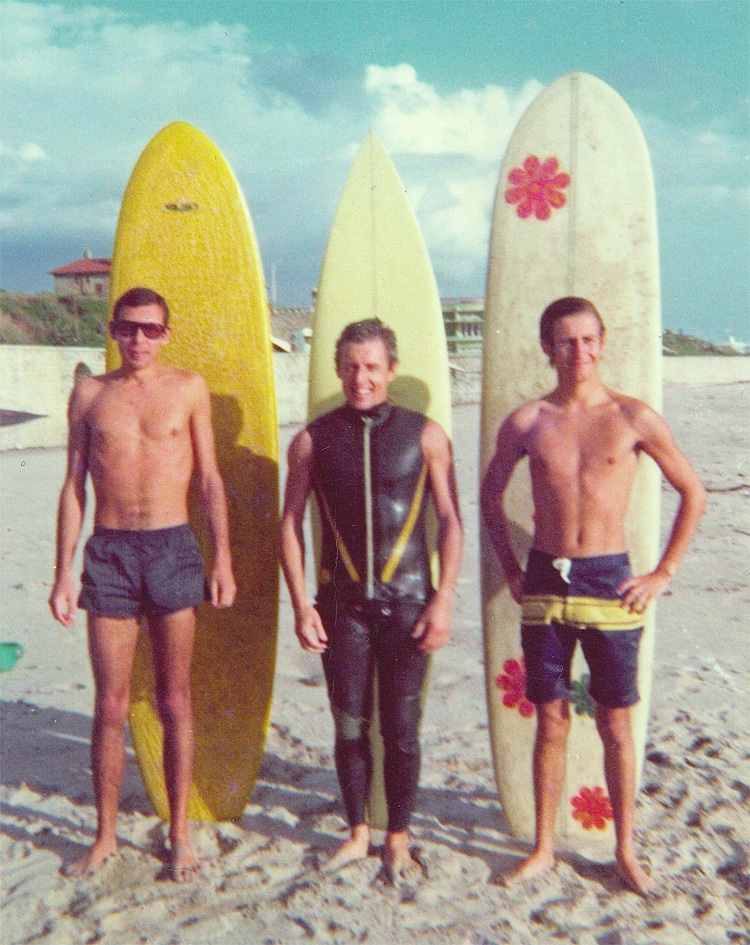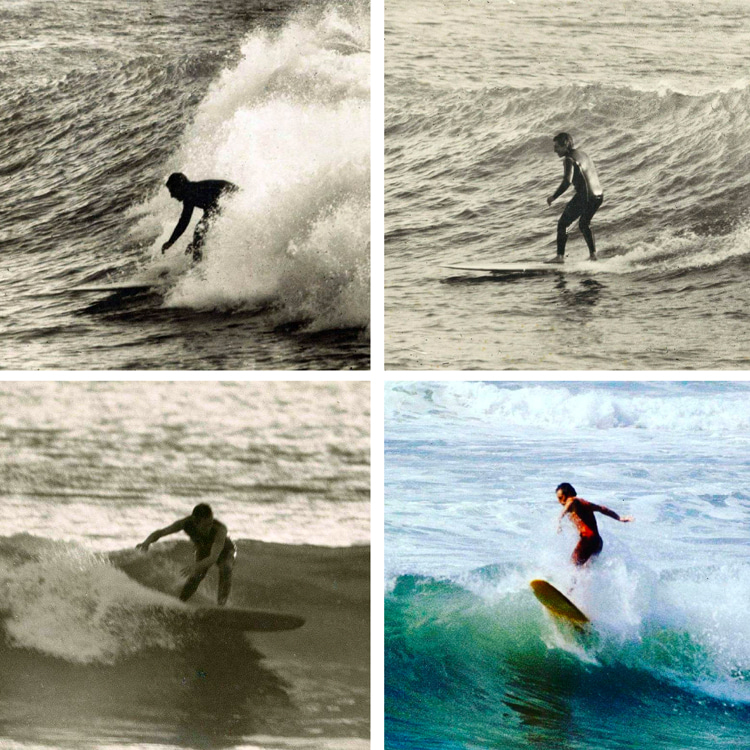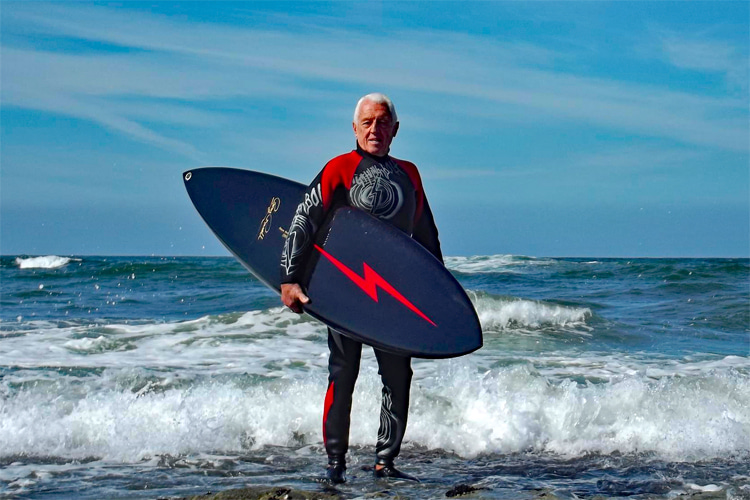Pedro Martins de Lima, the father of Portuguese surfing, passed away at the age of 92.
Pedro Martins de Lima was born in Lisbon on September 14, 1930, in a family of competitive horseback riders.
At five, he had his first sports-related injury. While riding a scooter, he lost control, fell, and underwent leg surgery.
After learning equestrianism at just six years old, Pedro became interested in skiing and sailing, boxing, rugby, and hockey, among other sports.
At 10, he tried jiu-jitsu, but his passion for the ocean took him to underwater fishing.

Discovering Surfing
Pedro quickly switched to underwater photography, which led him to meet Jacques Cousteau and even go diving with him.
"I learned what surfing was in 1945, when during the war I saw at the American Army officials' canteen, on Terceira Island, Azores, a news feature on the Hawaiian Olympic swimmer Duke Kanahamoku, with a huge wooden board measuring 4.8 meters [16 feet] and 50 kg, surfing a wave in Hawaii," Martins de Lima once recalled.
"I was blown away and decided I had to try it."
By 1946, he had fallen in love with surfing, but the lack of equipment did not allow him to practice.
So Martins de Lima put on a pair of Churchill swimfins a cousin had brought him from Hawaii and went bodysurfing in Carcavelos, Portugal.
One year later, Pedro was already trimming waves and bellyboarding with his cork paipo board at his home spot and in São Pedro do Estoril and Parede.
In 1952, Martins de Lima started using an underwater fishing dry suit to tackle the cold water. However, while working at Costeau's La Spirotechnique factory, he saw a neoprene wetsuit about to be launched in Europe.
Pedro immediately convinced the commercial director to get one for him. The only thing missing was a "real" surfboard.
In 1956, the intrepid waterman founded a company that imported hollow, finless plywood boards.
They were called "swimming boards" and allowed Pedro to start paddling out and practicing going past the whitewater.
In 1959, after returning from his skiing holidays in the French Pyrenees, Martins de Lima stopped in Michel Barland's surfboard factory in Bayonne, France, and bought a 16-kilogram surfboard.
Soon, the 29-year-old sportsman was finally giving surfing a go at Carcavelos beach.
At the time, he did not realize he had become the first-ever Portuguese surfer. And for nine years, Pedro was the only one out the back at Praia Grande, Ericeira, Pedra Branca, Ribeira d'Ilhas, São Julião, etc.

A True Waterman
Throughout his life, Pedro Martins de Lima was always connected to the ocean in some way. Then, at 50 years of age, he learned to windsurf.
He was the ambassador of Lightning Bolt for years, and at 85, he still wanted to learn to kitesurf.
Pedro Martins de Lima traveled the world and witnessed the growth and explosion of surfing in his country and around the planet. He worked in marketing for the textile industry.
"Surfing is an effervescent phenomenon, in such a way that I went from being a repressed individual to being considered a reference," said Martins de Lima.
In the 1960s, he explored the uncharted waves of Portugal and even shaped boards for his son and himself.
Pedro witnessed the first-ever article in Surfing magazine about the Portuguese waves and Nat Young's demand for payment when reached out for an interview with a local journalist.
In the 1980s, Martins de Lima moved to Porto, where he would influence a new generation of surfers and surfboard shapers.
The father of Portuguese surfing - and grandfather of Portuguese bodyboarding - always said that if he stopped being active, he would no longer be himself.
"Surfing is the most violent sport, but also the most peaceful because the fight is only against the sea," the Portuguese surfing pioneer stated.
For more on the life story of the legendary Portuguese surfer, get the book "História do Surf em Portugal - As Origens."
